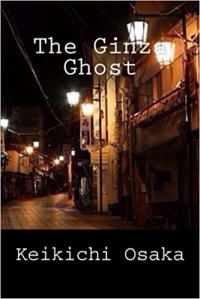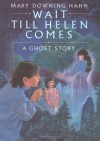Familiar Diversions
I'm a librarian who loves anime, manga, and reading a wide variety of genres.
Currently reading
The Ginza Ghost by Keikichi Osaka, translated by Ho-Ling Wong

Have I mentioned that I hate reviewing anthologies? Collections of stories by the same author are easier to review than ones with stories by many authors, but I’d still rather review individual novels, novellas, and short stories.
Anyway, this made it onto my TBR after I finished Soji Shimada’s The Tokyo Zodiac Murders and went hunting for similar books. The Ginza Ghost starts with an introduction about Osaka and his stories. Like Shimada, Osaka was an author of honkaku (orthodox) mysteries. He was born in 1912 and began prolifically publishing mystery stories starting in 1932. Unfortunately, this was a time when honkaku mysteries were looked at unfavorably in Japan, and so he eventually had to switch to comedy and spy stories. In 1943 he was drafted, and he died of disease sometime in 1945.
The collection includes twelve stories organized semi-chronologically by publication date. I’m not sure why there were a few exceptions mixed in. Perhaps to make sure the volume ended as strongly as possible? “The Phantom Wife” wouldn’t have made for as good a stopping point as “The Ginza Ghost.”
I’d highly advise skipping the portion of the introduction that discusses the individual stories. I made the mistake of reading the first few and, although they didn’t quite include spoilers, they contained enough information to affect the way I interpreted the stories and the evidence.
The first story was a fairly basic mystery. It wasn’t until later in the collection that one of Osaka’s signature elements, the possibility of supernatural involvement, came into play. Although none of his stories contained true supernatural elements, many of them were designed to look like they might. In “The Phantom Wife,” it appeared that a man was killed by his vengeful dead wife. The murder in “The Monster of the Lighthouse” seemed to have been committed by an enormously strong red octopus-like monster. In “The Ginza Ghost,” a young woman seemed to have been murdered by the ghost of a jealous wife. In “The Cold Night’s Clearing,” the murderer looked to be none other than Santa Claus himself.
Another thing that came up a lot in Osaka’s stories was optical illusions. While the way these illusions were uncovered didn’t always work for me, they were certainly interesting. One part, in particular, brought to mind 2015’s “The Dress,” the one that either looked blue and black or white and gold depending on who you asked.
I liked but didn’t necessarily love most of the collection. My particular favorites were “The Mourning Locomotive” (even though it relied heavily on information found in a letter after everything was all over), “The Ginza Ghost,” “The Guardian of the Lighthouse” (tragic and horrific), and “The Demon in the Mine" (wonderful incorporation of the setting). “The Cold Night’s Clearing” was also quite good, as long as you’re okay with your Christmas stories being very depressing. And “The Hungry Letter-Box” was a nice change of pace, the only mystery that didn’t involve a death of some kind. I later learned, after reading the bit about this story in the introduction, that this was the one story in the collection written after Osaka switched to spy stories and comedies.
There were other stories I didn't like quite as much. “The Phantasm of the Stone Wall” was a little boring, and the deductions in “The Mesmerising Light” were largely unnecessary and could have been done away with if one of the characters had come up with better questions. “The Three Madmen” and “The Hangman of the Department Store” were both nice enough mysteries, but not the best or most intriguing mysteries in the collection. “The Monster of the Lighthouse” started off okay but became, for me, the worst story in the collection by the end. Its placement right after “The Mourning Locomotive” probably didn’t help.
Ah, and I feel I should mention really quick that some of the stories have very gory and descriptive crime scenes. The ones that made me cringe the most were “The Mourning Locomotive” and “The Three Madmen.” The first had many grisly deaths by train, including the aftermath of trying to clean up, and the second included a victim whose brain had been removed.
Those with more of a taste for short stories might like this collection more than I did, but it wasn’t bad. “The Demon in the Mine,” the longest story in the book, made me wish that Osaka’s one novel, Yacht of Death, had been translated. The story’s greater number of pages gave him more time to really set up the situation (although the characters still weren’t fleshed out at all), and I loved the way he incorporated the specifics of the mine into the mystery.
The book included a publisher’s note on Japanese weights and measures, as well as a few translator’s notes. I wouldn’t have minded if there had been a few more translator’s notes - there were at least a couple things I was curious about that didn’t get notes.
(Original review posted on A Library Girl's Familiar Diversions.)












